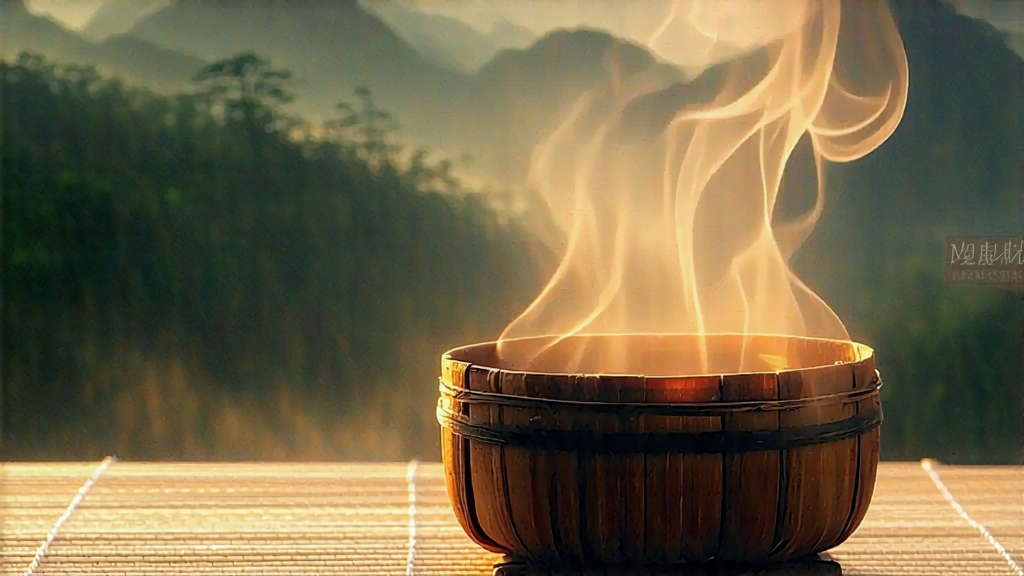
Tucked high above the Sichuan basin, where perpetual cloud veils the Min River gorge, lies Meng Ding Mountain, the cradle of the world’s oldest cultivated tea garden. It was here, in the mist-cooled terraces of Ganlu Temple, that Buddhist monks first coaxed the down-covered buds of Camellia sinensis into the subtle golden liquor now known as Meng Ding Huang Ya—Meng Ding Yellow Bud. While green tea grabs the spotlight and pu-erh courts collectors, yellow tea remains the quiet aristocrat of China’s six great tea families: produced in tiny lots, misunderstood abroad, yet once reserved for Tang-dynasty emperors and celebrated by Song poets as “the dew of immortality.” This essay invites the global tea traveler to rediscover a style that is literally yellowed, not oxidized, and whose soft, chestnut-sweet cup belies a craft so demanding that fewer than thirty masters still command it.
History: from celestial tribute to near extinction
Legend dates Meng Ding tea to 53 BCE, when cultivator Wu Lizhen planted seven bushes on the summit, declaring them “celestial.” By Tang times (618-907) the mountain’s bud tea was taxed in silver and carried by relay horses to Chang’an within ten days of Qingming. The Song court fixed the tribute quota at 360 kilograms; Ming emperors added a “yellowing” step to deepen fragrance and soften astringency, creating the first intentionally yellow tea. After 1911 imperial orders vanished, and the craft withered during war and revolution. When tea scholars retraced the mountain paths in 1959 they found only three ageing artisans who remembered the full protocol; their notes became the blueprint for the modern revival. Today Meng Ding Huang Ya enjoys Protected Geographic Indication status, yet annual production hovers around two metric tons—rarer than first-growth Bordeaux.
Micro-terroir: why the mountain makes yellow possible
Meng Ding rises 1 456 m above sea level, trapping humid Sichuan fog that condenses into a 92 % average relative humidity. The short-wave light filtered through cloud increases amino acids, especially L-theanine, lending innate sweetness that survives the prolonged “sealed yellowing” phase. Soils are yellow-brown laterite rich in kaolin, draining quickly yet retaining just enough moisture to stress the bushes into concentrating aromatic precursors. Cultivars are seed-selected descendants of Wu’s original seven bushes, now called the “Ganlu group,” distinguished by tiny, thick buds whose trichomes turn silvery-gold when back-lit. Picking window spans only ten days around Grain Rain (late April), when each bud is 18–22 mm long and still unfolded—what locals call “parrot beak.”
Craft: the art of letting it almost go bad
Yellow tea’s signature is “smothering” (men huang), a controlled post-fixation rest that allows non-enzymatic oxidation and mild fermentation. Meng Ding Huang Ya is processed entirely by hand in five painstaking stages:
- Kill-green over bamboo-wood charcoal at 140 °C for four minutes, just enough to denature polyphenol oxidase while preserving a 55 % moisture core.
- Initial roll: the warm leaves are kneaded on a rattan tray for eight minutes to rupture 30 % of cells, releasing sticky sap that will later glue the buds together.
- First yellowing: the twisted buds are wrapped in steamed yellow cotton cloth, forming 1.5 kg “pillows” that rest in a humid cedar box at 28 °C for 24 hours. During this sauna the chlorophyll breaks into pheophytin, carotenoids intensify, and a floral lactone reminiscent of magnolia emerges.
- Low-temperature firing: the half-yellowed buds are spread on a husk-fired bamboo roaster at 65 °C, turned every 30 seconds for 40 minutes to reduce moisture to 20 %. The artisan listens for a “popcorn” crackle that signals proper lamination of the leaf cuticle.
- Second yellowing: the semi-dry tea is re-wrapped and left for another 36 hours, developing the characteristic golden down and honeyed aroma. A final gentle bake to 7 % moisture locks in the profile. The entire cycle spans four days and demands that the master decide, by scent alone, when microbial action must be halted—one extra hour and the batch collapses into sour compost.
Grades & leaf style
Meng